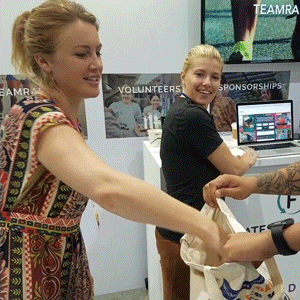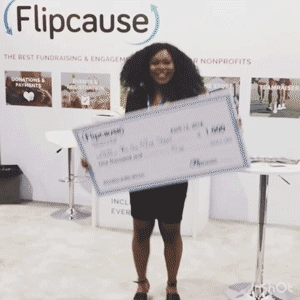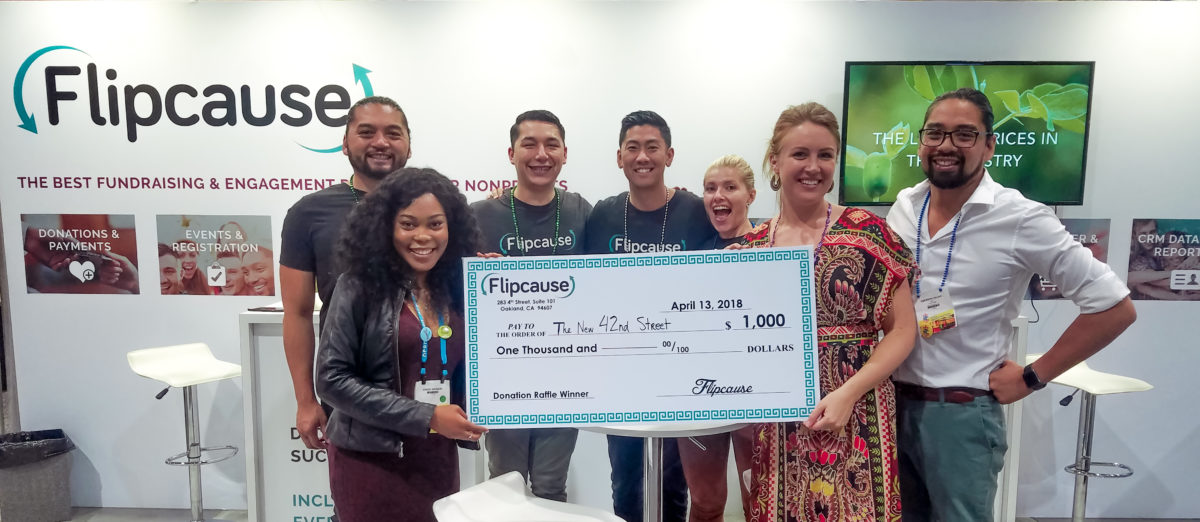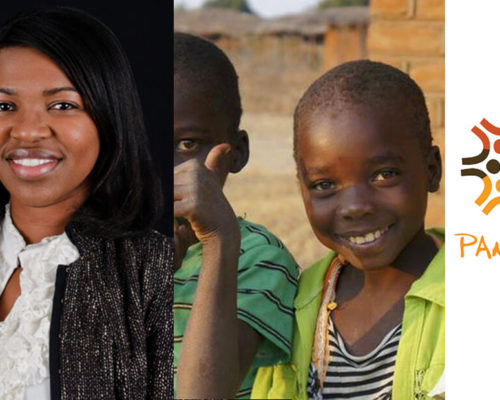We were thrilled to attend our first Nonprofit Technology Conference (NTC) by NTEN this year!
With over 60 breakout sessions spanning topics from fundraising and leadership to marketing and tech, there was a ton to learn from incredible thought leaders in each field. While we have no way of getting it all on paper, we want to share our favorite moments from #18NTC!
Aha! Moment #1: Where and How to Build Capacity
- Build capacity in skills of your existing team members
- Build capacity by outsourcing and automating operations
- Build capacity by utilizing Taproot’s pro-bono services for various projects!
What we learned…
The components that make up your organization’s capacity are Finances & Resources, People & Skills, and Infrastructure & Systems. Let’s examine the potential for building capacity within each one.
For all intents and purposes, we can assume that the first component, finances and resources, will stay the same. While having more resources is always ideal, it’s generally unlikely that we will have more to work within this area.
When it comes to people and skills, we can further break them down into three areas: time, quantity, and skills. Once again, we all know the bitter reality: time and quantity of staff are not going to magically increase. We’ll consider these areas inelastic as well.
If we won’t be adding more staff or time, we should focus on the third area and ask: how do we add more skills?
Step one is to survey your existing team and determine what skills they already have. We all wear so many hats in our roles that, frequently, our existing team has hidden talents we didn’t even know existed! Once you have your existing skills inventory, it’s worth re-evaluating how to allocate these human resources. Do you see an opportunity to move someone into a role of greater contribution? You might even want to split the roles up differently to make the most of your existing team.
After this exercise, some skills may still be missing on your team. Luckily, there’s a simple solution: train your existing team to develop the skills your organization needs.
You might be reticent to invest in training for your staff for fear that they will leave your organization for greener pastures as a result. But what is the alternative? For your organization to remain stagnant? Keep in mind, also, that by taking an active role in the career development of your team you will actually be one of the few employers that invest in their people’s development. This has been shown to be incredibly valuable to employees in their workplace.
Once we’ve covered the Finances and People areas, we can tackle infrastructure and systems.
You can categorize your systems and tasks as being mission/vision-oriented or operations-oriented. Everything related to your nonprofit’s mission and vision should be maintained in-house! Do not outsource this part, and don’t cut corners here. Instead, find ways to automate, outsource, and scale anything related to your operations.
You can use volunteers, freelancers, and software to help automate and outsource tasks such as data entry, sending thank you and tribute letters, managing your website, accounting, and so on. Utilizing external people and tools will free up your staff to focus on mission-critical work and make them more effective at what they do! It’s amazing how much you will be able to save. For example: by getting donors to give online, you can vastly reduce time spent by staff on mailing, sorting, data entry, and bookkeeping for an offline donation.
Aha! Moment #2: THE BEST WAYS TO REACH AND ENGAGE MILLENNIAL DONORS
- Face-to-face is the best way to engage. Go to events where they are such as street fairs, festivals, and farmer’s markets.
- They want things easy and instant: have a mobile device with a way to allow them to take action on the spot (ie. make a donation or join the mailing list).
- Keep physical collateral minimal – “They hate carrying things.”
- Offer the option for recurring monthly micro-donations of $3-$5.
What we learned…
The biggest generation of Baby Boomers has had kids and they have grown up, leading to the biggest generation since the Baby Boomers: the Millennials. If you have an aging donor base, by design you have a diminishing donor base. Reaching younger generations of donors will be key for all nonprofits in driving a sustainable revenue model for years to come.
It will be critical for all of us to carefully consider our millennial engagement strategy.
Millennials are notoriously hard to reach. They don’t read emails. They also don’t like receiving physical mail and are worn out by unsolicited advertising and spamming. Counter to popular myth, just having social media accounts is not enough to reach and engage them. With this in mind, the best way to build relationships with them is face-to-face, and the best way to find them in person is at the events they attend.
You can make it easy for them to get engaged on the spot with your organization by having a tablet with a swiper. This way, they can sign up for a membership or make a donation immediately. Even if they just want to join the mailing list or follow you on Facebook, make it available for them to make that micro-commitment right away.
If they do take an engagement action, have materials available to give them something right away. If you want to hand out information about your organization at these events, keep it the size of a business card—something that can fit in a wallet that will serve as a reminder. Also, you’ll want to provide a token of gratitude for anyone who does engage. (NTC had some pretty great swag: sunglasses, well-designed stickers, and pencils with funny sayings. Guess whose work laptops are now covered in NTEN branding? Yes, ours!)
Finally, don’t overlook those who don’t think they can support an organization because they are living paycheck to paycheck. Provide a way for them to sign up for a micro-donation, a monthly donation for an amount that will be insignificant to them. For less than the price of a cup of coffee each month, they can make a real difference. This is a great way to engage younger donors—it will inspire those who thought they didn’t have the means to give to your cause and see themselves in a new light.
Aha! Moment #3: AN ALL-IN-ONE DATABASE IS A GAME CHANGER
The #1 thing we kept hearing in various settings from different organizations is what a difference it makes to have all of their data in a single place. One of the biggest challenges and frustrations they face is having their data in multiple places and formats and being unable to reliably keep it all in a single database. We know that data is key, and without data hygiene and the ability to access that data, it’s hard to move forward and grow your programs. Overcoming this challenge has far-reaching implications. It can mean that your organization is finally able to segment your audiences for your email marketing efforts (a huge driver in conversion rates), reach new donors, and move donation channels from offline to online giving (which is critical to increasing efficiency and cutting costs).
Favorite Moment #4: GIVING AWAY A BIG CHECK
Undoubtedly, the absolute highlight of #18NTC was getting the chance to make an impact. Nothing feels better than giving, so we were naturally excited when our CEO Emerson gave us $1,000 to donate to a nonprofit during the conference. While branded swag is nice and all, it felt good to give away something that was truly meaningful and valuable.
Visitors to our booth dropped cards all week to be entered in the drawing. After meeting many incredible nonprofits, the big moment came at the end of NTC of Friday.
And the winner is….

Their nonprofit has been responsible for the dynamic evolution of 42nd Street in New York City. Founded in 1990 in response to the neglected stretch of urban decay that was 42nd Street between 7th and 8th Avenues, the New 42nd St is a theater company working to revitalize the theater and arts culture in Times Square, provide jobs, and create access to affordable theater for underprivileged groups.

Just seeing Sendie Brunard’s surprise, delight, and appreciation was absolutely the greatest moment of our entire trip. We couldn’t be happier with how the donation will be spent, and are so proud to support their work!
We left New Orleans with our hearts full, and our mission to serve our community burning more brightly than ever.
We loved meeting the community and connecting with our partners. Thank you to everyone who made these magical moments possible!
Want the full download from our time at #18NTC? You can check out all of the 18NTC Collaborative Notes here.
Credits:
Capacity Building session by Steve Heye of Oracle NetSuite
Millenial Donor insights by Mark Saari of the Appalachian Trail Conservancy




